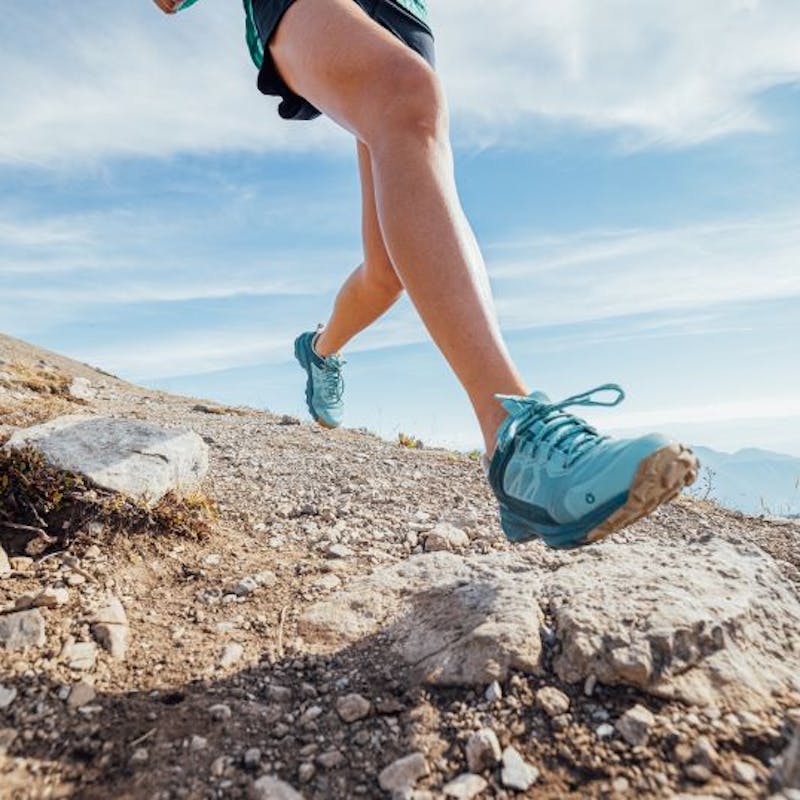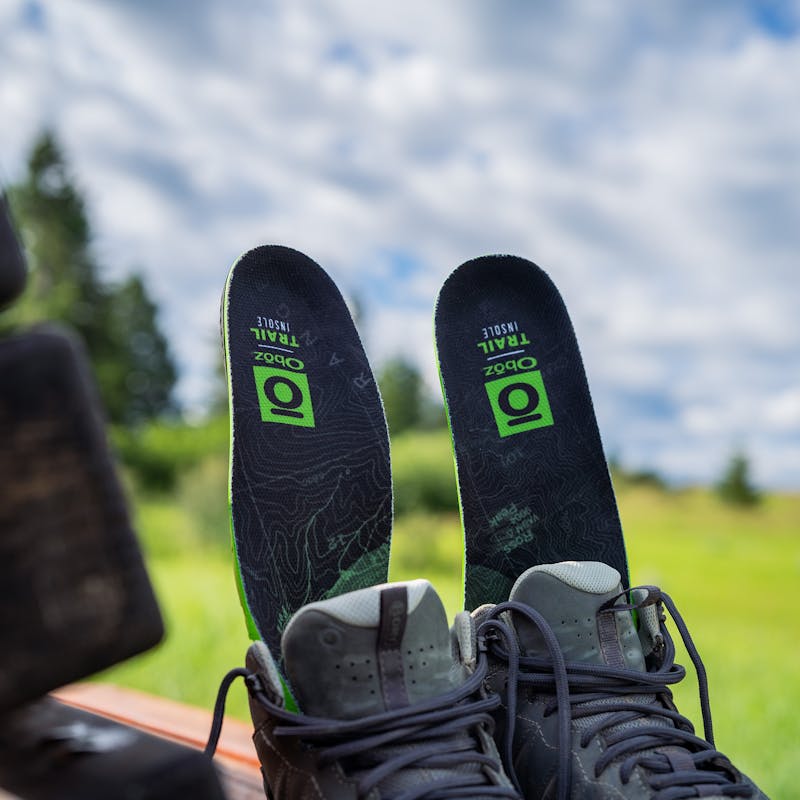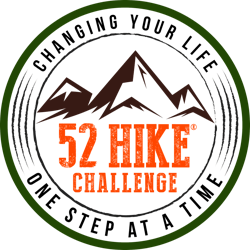The perfect pair of hiking boots will be your companion on adventures, big and small. They'll prevent blisters and injury, supporting you so you can go whatever distance you choose.
This blog is brought to you in partnership with 52 Hike Challenge.
We're here to find the right shoe for you. From size to style we break down the differences in hiking footwear to help make your decision easy. Whether you're a newbie to the trail or well acquainted with big adventures, Oboz expert Parker will provide valuable insights on the best hiking shoe for you. Read on for tips for finding your shoe size, avoiding blisters, different footwear styles, waterproof shoes, and injury prevention.
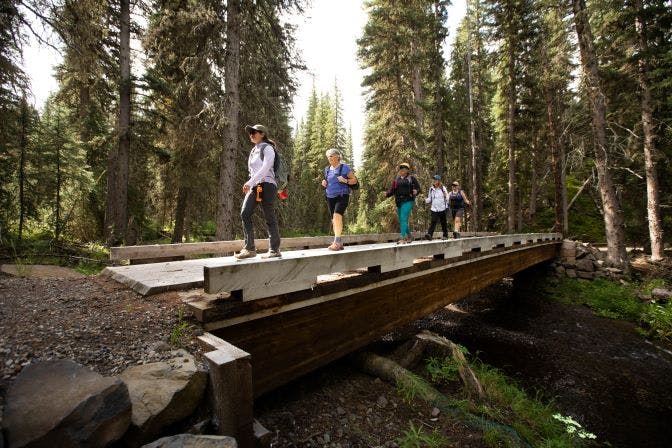
What to look for in a hiking shoe
In a nutshell, you should search for hiking footwear that provides:
- Arch support
- Durability
- Comfort
With these combined factors you'll be able to narrow down your options and find a hiking shoe that fits your foot.
1. Sizing your hiking footwear
Buying your first pair of hiking shoes can be intimidating. Let's simplify it by starting with fit.
A common misconception when it comes to hiking footwear is to size up or down. According to Parker, neither option will result in the perfect fit. Finding your true size will ensure your foot is properly supported for the best possible trail experience.
The easiest way to find your fit is to visit your local retailer where they'll use a Brannock device. The Brannock device is a tool used to measure your foot length, width, and arch length. Your arch length is the distance from the back of your heel to the first metatarsal joint on your big toe. For a full breakdown of measuring with the Brannock device, check out this guide.
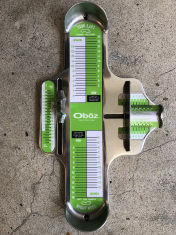
Arch length is more important than you may think as it ensures that your foot flexes with the flex of your shoe. When your foot is misaligned with the flex of your shoe it can result in micro-firing. Micro-firing is when the muscles in your foot fire off to keep your foot stable.
In a perfect shoe, your foot should be kept stable by the base and insoles. Your arch should be well supported with no movement in the heel or side to side. A good fit means less work for your foot and therefore a minimized risk of injury. The Trail Insole is designed to support your arch and keep your foot in place for optimized performance on and off the trail.
Here are some things to look out for when trying on shoes.
- Get measured at the end of the day. Your feet change throughout the day, so catching the at their largest (and most swollen) point will best replicate the state of your feet on a hike. It's also a good idea to try shoes on with the socks you'll be wearing on the trail.
- Match your flex zone for optimized fit. As mentioned above, the best way to do this is through a proper sizing.
- Always walk up stairs or a ramp to ensure your toes aren't making contact with the shoe. Replicate the up and downhill conditions of a trail.
2. Style matters
There are lots of options out there when it comes to choosing a style of hiking footwear. From waterproof boots to performance sandals, we'll break down your options to take the drama out of picking what's best. The best style of footwear depends a lot on the conditions you'll see on the trail. Look into what kind of terrain, weather, and activity level you'll need your shoes to perform for.
3. Low vs mid height shoes
Perhaps the hardest choice to make in footwear is the height of the shoe cuff. There are distinct advantages to each, but ultimately it's best to try on your footwear to see what's most comfortable for you.
Low top hiking shoes will feel more athletic, hit below your ankle, and can be versatile for trail running depending on their design.
Mid top hiking boots will cover your ankle, feel a bit more secure, and keep debris out of your shoe.
Some people opt for mid-top shoes in an effort to better support their ankles. The truth is your support should be coming from the base of your shoe. The mid height will provide some added comfort, but if your foot is being properly supported either height will keep your foot upright and minimize rolling. Arch support and the proper fit are key to keeping your foot supported and minimizing the risk for injury.
Pro Tip: Hard plastic orthotics can help support your arch, but be cautious because they can rub against a hiking shoe’s waterproof membrane if not installed properly.
4. Waterproof vs ventilated hiking footwear
Should you wear a waterproof or ventilated hiking boot? The answer to this question really comes back to the terrain, conditions, and climate that you plan to adventure in.
Waterproof is not necessarily the best option for hot, humid climates. According to Parker, a ventilated shoe can be more ideal. Because waterproof hiking shoes have more layers it takes more time for them to dry. Ventilated footwear is designed to dry faster and provide more breath-ability.
With these factors considered, Parker recommends waterproof footwear when water levels are below the top of the boot. Waterproof shoes are also preferable where snow is involved. To prevent snow from entering your boot you can even consider a gaiter.
When humidity or deeper water are involved, ventilated footwear will dry more quickly and allow your foot to breath better.
Long story short; evaluate the conditions you plan to hike in and ask your local retailer for their recommendations.
5. Drying your boots
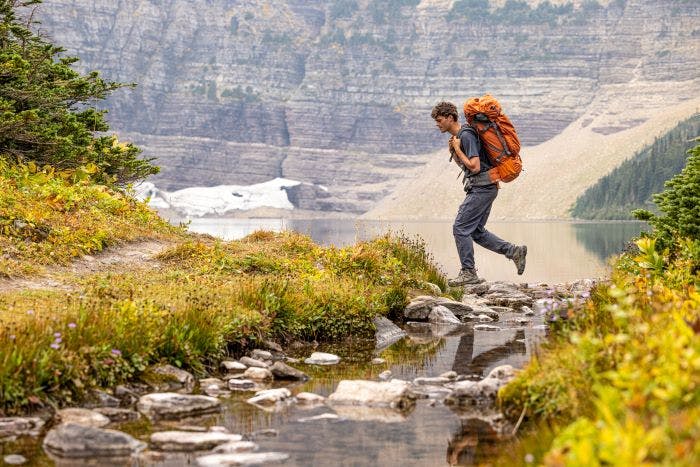
Now that we've broken down waterproof vs ventilated hiking footwear, let's chat about drying your boots. Sometimes, against all our best efforts, your hiking footwear gets wet. Don't panic, read on.
It may seem intuitive to place your boots near a heat source to expedite the drying process. Unfortunately, we don't recommend this method. Materials like leather can shrink when it comes in contact with high heat. It can also cause your toe area to de-laminate, in other words, pull apart from the shoe.
To dry your hiking footwear, remove the insole and set it on its side. You can also stuff newspaper or tissue paper inside the shoe for faster drying.
6. The lifespan of hiking footwear
How long your hiking footwear lasts depends on multiple variables including your body weight with or without a backpack, your foot sweat content and acidity, how often you hike and the conditions.
If you want a hiking boot that will last longer, you can look for certain materials that are proven to be more durable than others. For example, polyethylene will outlast EVA foam.
7. Hiking with plantar fasciitis
Plantar fasciitis is a common condition usually caused by your feet working too hard to support you. It's important to find footwear that reduces your risk of plantar fasciitis and if symptoms are present, reduces the strain on the injury. In short, this condition is inflammation in the plantar fascia (or tissue) on the bottom of your foot. This condition is characterized by an ache in the heel and arch area of the foot. A well fit hiking shoe helps reduce micro-firing in your foot that can contribute to plantar fasciitis symptoms. Insoles like the Trail Insole are a good place to start in preventing and alleviating plantar fasciitis.
Parker recommends finding an insole that supports your arch and helps prevent collapse. It's never fun to feel the effects of a chronic injury such as plantar fasciitis, but with proper treatment and support you'll be back on the trail in no time.
Off you go
Now that you know the basics of choosing footwear, finding a well fit shoe, and preventing injury, you're ready to hit the trail! Whether you're taking a stroll on a walking trail or summiting a peak, the Oboz shoe option for you is out there. For help with styles check out this shoe finder to help you decide.
A special thanks to the 52 Hike Challenge for their contribution to this post. Check them out for the challenge of a lifetime!
For more hiking tips check out the Oboz newsletter and be sure to follow us on Instagram for updates and releases.

